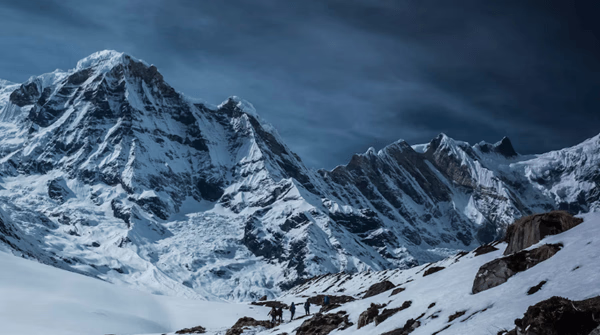
When planning a Himalayan adventure, travellers often choose between Nepal and Bhutan. Both nations offer unique experiences, rich cultural heritage and stunning landscapes, yet they differ significantly in various aspects.
Here, we compare the key differences between Nepal and Bhutan to help you decide which destination suits your preferences. Read on and know when to start booking your trip!
1. Cultural Heritage And Traditions
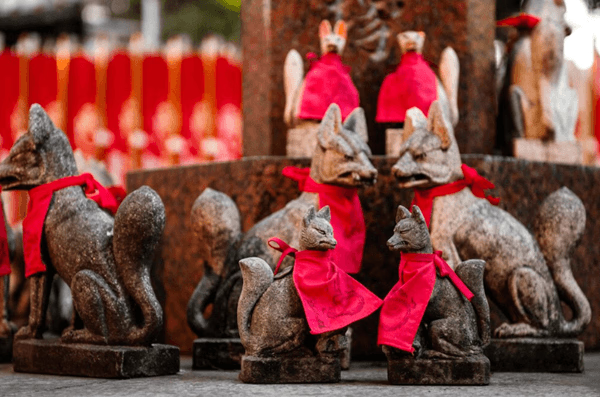
Nepal: A Melting Pot of Cultures
Nepal is a diverse nation, home to over 100 ethnic groups, each contributing to the country's rich cultural mosaic. The dominant religion is Hinduism, practised by most of the population, but Buddhism also holds significant influence, particularly in regions like the Kathmandu Valley.
Nepal's vibrant cultural scene is characterised by its festivals. Dashain, the longest and most significant Hindu festival, involves animal sacrifices, family gatherings and the worship of the goddess Durga.
Tihar, another major festival, is a five-day celebration that honours animals such as crows, dogs and cows, culminating in Bhai Tika, a day for celebrating the bond between brothers and sisters.
Nepal's historical and religious sites are a testament to its rich spiritual heritage. The Pashupatinath Temple is a UNESCO World Heritage Site considered as one of the holiest Hindu shrines, attracting pilgrims worldwide.
The Boudhanath Stupa, also one of the largest stupas in Nepal, is a key pilgrimage site for Buddhists and a centre for Tibetan culture.
Bhutan: Preserving Ancient Traditions
In contrast to Nepal's cultural diversity, Bhutan is a predominantly Buddhist nation where traditions have been meticulously preserved over the centuries. The country's commitment to maintaining its cultural heritage is evident in its festivals, architecture and daily practices.
Bhutan's festivals, known as Tshechus, are spiritual events held in honour of Guru Rinpoche, the saint who introduced Buddhism to Bhutan. These festivals feature masked dances, traditional music and religious rituals monks and laypeople perform.
Each district in Bhutan holds its own Tshechu, providing a unique opportunity for locals and visitors to witness the country's rich cultural traditions.
Dzongs, fortress-monasteries, also serve as administrative and religious centres in each district. The most famous is the Paro Taktsang, or Tiger's Nest Monastery, precariously perched on a cliffside.
These structures reflect Bhutan's dedication to preserving its heritage. Using traditional construction methods and materials ensures that Bhutan's buildings remain true to their historical roots.
2. Accessibility And Travel Logistics
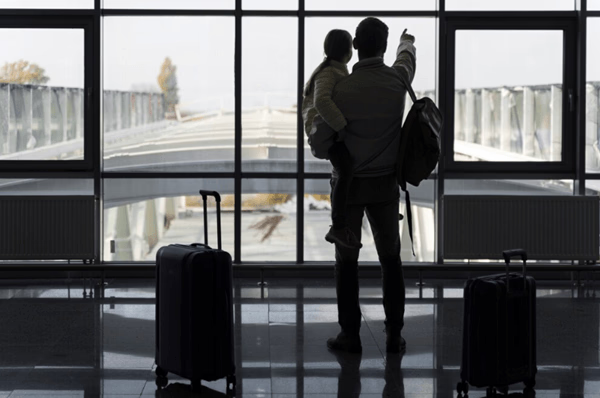
Nepal: Easier Access
Nepal is relatively easy to reach, with Tribhuvan International Airport in Kathmandu offering numerous international connections. This accessibility makes Nepal a convenient starting point for Himalayan explorations.
Domestic travel within Nepal is also facilitated by a wide network of flights, buses and taxis, making it straightforward for visitors to explore different regions of the country. The availability of diverse transport options enhances the travel experience, allowing for flexibility and ease of movement.
-
International Connectivity
Tribhuvan International Airport is Nepal's primary gateway, with direct flights from major cities across Asia, Europe and the Middle East.
Airlines such as Qatar Airways, Turkish Airlines and Singapore Airlines operate regular flights, making it accessible for international travellers.
The airport's central location in Kathmandu provides a convenient base for further exploration of Nepal's cultural and natural attractions.
-
Domestic Travel
Nepal's domestic travel infrastructure includes a network of airports serving major cities and trekking hubs like Pokhara and Lukla.
Bus services connect Kathmandu with other parts of the country, including popular tourist destinations such as Chitwan National Park and Lumbini.
For shorter distances, taxis and local buses are readily available, ensuring that travellers can easily navigate the country.
Guide on travelling from Kathmandu, Nepal to Bhutan
Bhutan: Controlled Tourism
Travel to Bhutan is more regulated than to Nepal. Visitors must pay a daily tariff, Sustainable Development Fee, which does not include accommodation, meals, transport and a guide.
This system ensures sustainable tourism and maintains Bhutan's pristine environment and cultural integrity. However, it limits spontaneous travel plans and requires more planning and budgeting.
-
Booking and Tariff
As of September 2022, tourists entering Bhutan are no longer required to travel through a tour operator. However, it’s still highly advisable for you to plan your trip to Bhutan with a licensed tour operator as the guides have extensive knowledge of Bhutan’s attractions, culture, and logistics. They can create customised itineraries that ensure you see the best of Bhutan without missing out on hidden gems.
Find out how to apply for a Bhutan visa
-
Limited Flights
Paro International Airport is Bhutan's sole international airport, with a limited number of flights operated by Druk Air and Bhutan Airlines.
The airport's challenging terrain and strict flight regulations contribute to its exclusivity. Direct flights are available from Singapore, Bangkok, Delhi, Gaya, Bagdogra, Kolkata, Dhaka and Kathmandu.
The limited flight options mean planning ahead is essential for travellers visiting Bhutan.
3. Cost of Travel
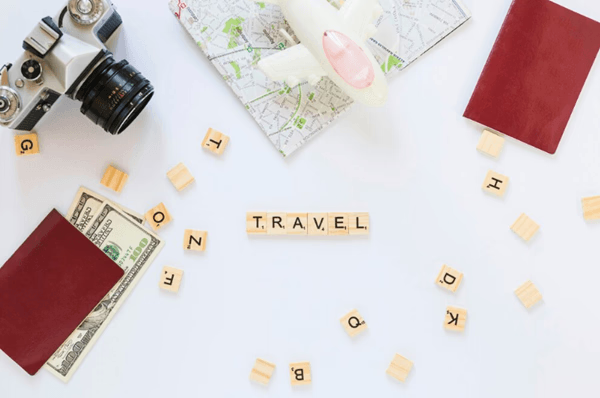
Nepal: Budget-Friendly
Nepal is known for being a budget-friendly destination, making it an attractive choice for travellers looking to explore the Himalayas without breaking the bank. The affordability extends to various aspects of travel, including accommodation, meals and transportation.
Whether you are staying in a guesthouse or a budget hotel, the cost is relatively low compared to many other travel destinations.
-
Accommodation
Nepal has plenty of accommodation options to suit different budgets. From basic guesthouses to mid-range hotels and luxury resorts, travellers can find affordable lodging in both urban centres and trekking regions.
Budget travellers can also find clean and comfortable guest houses for as little as $5 to $10 per night, especially in famous trekking areas like Pokhara and the Annapurna region.
-
Meals
Food in Nepal is inexpensive and offers a variety of choices, from local Nepalese cuisine to international dishes.
A typical meal at a local restaurant featuring traditional dishes like dal Bhat (lentil soup with rice) or momos (dumplings) can cost as little as $1 to $3.
Even in tourist hotspots like Kathmandu and Pokhara, meals remain affordable, allowing budget travellers to enjoy a diverse culinary experience without overspending.
-
Transportation
Transportation in Nepal is also cost-effective. Local buses and taxis offer an affordable means of getting around cities and towns. For longer distances, tourist buses and domestic flights provide economical options.
Trekking, a significant draw for visitors, is also accessible on a budget. Popular routes like the Annapurna Circuit and Everest Base Camp offer a range of trekking packages, from budget-friendly teahouse treks to more luxurious guided tours.
Independent trekkers can also significantly cut costs by arranging their accommodation and meals along the trails.
Bhutan: High-Value Tourism
In contrast to Nepal, Bhutan follows a "High Value, Low Volume" tourism policy that results in higher travel costs. This approach limits the number of tourists, ensuring that those who visit have a high-quality experience while helping to preserve the country's cultural and natural heritage.
-
Daily Tariff
The current Sustainable Development Fee (SDF) is at USD100 per adult per night. USD50 for children aged 6 to below 12 years old. For children aged 5 and below, the SDF is waived.
Regional tourists from India are required to apply for a permit and pay 1200 INR/night.
Tourists from Maldives are required to pay USD100 per adult per night but they are able to apply for a visa upon arrival.
The Royal Government of Bhutan has announced that the first 15,000 Bangladeshi tourists visiting Bhutan each year can pay a Sustainable Development Fee (SDF) of USD 15 per night starting June 2. This special scheme will be valid until 2027.
-
Accommodation
Accommodation in Bhutan is generally of a high standard. Visitors can expect to stay in comfortable three-star hotels, with options to upgrade to four or five-star hotels at an additional cost.
These accommodations provide a blend of modern amenities and traditional Bhutanese hospitality, ensuring a comfortable stay that aligns with the country's cultural values.
-
Meals
The food typically features locally sourced ingredients, with dishes such as ema dashi (chilli and cheese) and red rice being stapled.
The inclusive nature of the tariff means that travellers do not need to budget separately for meals, adding to the convenience and value of the Bhutan travel experience.
-
Transportation and Guided Tours
Transportation within Bhutan is well-organised, with private vehicles and drivers included in the travel packages.
The services of a licensed Bhutanese guide are also part of the package, providing valuable insights into the country's culture, history and natural beauty. This guided experience ensures that visitors gain a deep understanding of Bhutan, enhancing the overall value of the trip.
4. Environmental Policies

Nepal: Growing Awareness
Nepal has made significant strides in environmental conservation, particularly in its popular trekking areas. With the increasing influx of tourists, efforts to maintain ecological balance are crucial.
Initiatives such as the Sagarmatha Pollution Control Committee (SPCC) play a role in preserving the Everest region by implementing measures to clean up trails, manage waste and promote sustainable trekking practices.
Despite these efforts, high tourist traffic continues to pose challenges, highlighting the need for ongoing conservation initiatives and greater environmental awareness among visitors and locals alike.
-
Conservation Efforts
Nepal's conservation efforts extend beyond the Everest region. Protected areas like Chitwan National Park and Annapurna Conservation Area have been established to preserve biodiversity and promote eco-tourism.
Community-based conservation programs involve local populations in protecting their natural resources, ensuring that conservation benefits are shared by those who live in and around these protected areas.
Bhutan: A Green Kingdom
Bhutan is globally recognised for its strong environmental policies, maintaining over 70% forest cover and achieving a carbon-negative status.
The country's commitment to environmental preservation is evident in its strict regulations on tourism and development, ensuring that its natural landscapes and biodiversity remain intact.
Bhutan's unique approach to development, prioritising Gross National Happiness (GNH) over Gross Domestic Product (GDP), emphasises sustainable development, environmental conservation and cultural preservation.
-
Sustainable Practices
Bhutan's environmental policies include measures to protect forests, wildlife and water resources. The government enforces strict rules against deforestation and promotes using renewable energy sources.
Agricultural practices are also designed to be sustainable, minimising harmful pesticides and encouraging organic farming.
The tourism industry is carefully managed to prevent environmental degradation, with the daily tariff system ensuring that visitor numbers are kept within sustainable limits.
5. Religious Significance
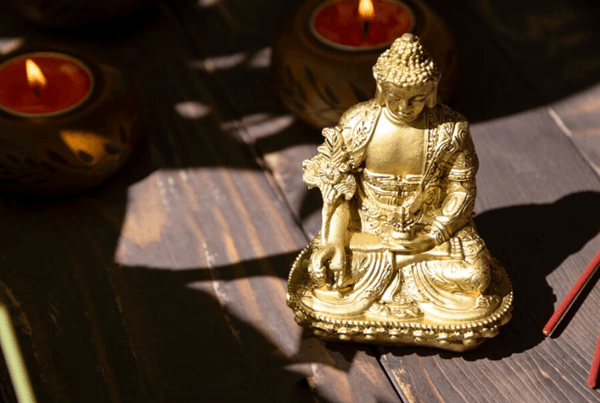
Nepal: Hinduism And Buddhism
Nepal is primarily Hindu, with a significant Buddhist influence, especially in the Kathmandu Valley. This blend of religions is evident in its temples, stupas and daily practices. The country is dotted with numerous religious sites, each reflecting the harmonious coexistence of these two faiths.
-
Temples and Stupas
Nepal is rich with temples and stupas, showcasing the country's spiritual diversity. Hindu temples, such as the Pashupatinath Temple, draw devotees from all over the world.
As a major centre of Hindu worship, Pashupatinath hosts numerous festivals and rituals, especially during Maha Shivaratri, when thousands of pilgrims gather to pay homage to Lord Shiva.
Equally significant are the Buddhist stupas, with the Boudhanath Stupa being one of Nepal's largest and most important. This UNESCO World Heritage Site is a focal point for Tibetan Buddhism and attracts pilgrims and tourists who come to circumambulate the stupa and spin its prayer wheels.
-
Pilgrimage Sites
Pilgrimage sites like Lumbini, the birthplace of Lord Buddha, further cement Nepal's status as a spiritual hubNepal. The sacred pilgrimage site, also a UNESCO World Heritage Site, includes the Maya Devi Temple, ancient ruins and monastic zones developed by various Buddhist countries.
It draws Buddhists from around the globe who come to meditate and pay their respects. The blending of Hindu and Buddhist elements in Nepal offers a unique spiritual experience that enriches the country's cultural tapestry.
Bhutan: A Buddhist Nation
Bhutan's identity is deeply intertwined with Buddhism. The religion shapes every aspect of Bhutanese life, from daily rituals to grand festivals, making Bhutan a hotspot for sacred sites.
-
Monasteries and Dzongs
Sacred sites of Bhutan which include Monasteries, stupas and Dzongs are central to Bhutanese life. The country's landscape is dotted with these sacred structures, each serving as a hub for religious activities and community gatherings.
The iconic Tiger's Nest Monastery, or Paro Taktsang, is perched on a cliffside and epitomises Bhutan's serene and spiritual atmosphere.
Dzongs, fortress-monasteries, serve as administrative centres and monastic complexes, exemplifying Bhutan's unique blend of religion and governance.
-
Daily Rituals and Festivals
Religious practices are integral to Bhutanese culture. Daily rituals, such as lighting butter lamps, chanting prayers and spinning prayer wheels, are commonplace.
Festivals, known as Tshechus, are grand events held in honour of Guru Rinpoche, the saint who brought Buddhism to Bhutan.
These festivals feature masked dances, music and elaborate ceremonies celebrating the country's spiritual heritage.
The Thimphu Tshechu and Paro Tshechu are among the most popular, drawing thousands of Bhutanese and tourists alike to witness the vibrant cultural displays.
Check out the latest Bhutan festival calendar.
Conclusion About Nepal vs Bhutan
Both Nepal and Bhutan offer unique and enriching experiences. With its diverse culture, affordable travel options and world-renowned trekking routes, Nepal is perfect for budget-conscious adventurers and cultural explorers.
With its preserved traditions, controlled tourism and environment, Bhutan provides a more exclusive and serene experience.
Ultimately, the choice between Nepal and Bhutan depends on your travel preferences, budget and interest in cultural or environmental aspects.
Whichever you choose, both Himalayan kingdoms promise unforgettable memories and profound experiences with Druk Asia. Contact Druk Asia for your Himalayan trip today!
Frequently Asked Questions About Nepal vs Bhutan
What Are The Visa Requirements For Visiting Nepal?
Most nationalities can obtain a visa on arrival at Tribhuvan International Airport or apply online for an e-visa. The visa typically allows for multiple entries and can be valid for up to 90 days, making it convenient for tourists planning an extended stay.
What Kind Of Wildlife Can I See In Bhutan?
Bhutan is known for its rich biodiversity, including species like the takin (the national animal), snow leopards, black-necked cranes and other bird and animal species. The country's numerous protected areas and parks offer great opportunities for wildlife viewing and nature exploration.
What Is The Best Time Of Year To Visit Nepal?
Choose to visit Nepal in spring (March to May) and autumn (September to November). The weather is clear and mild during these periods which is ideal for trekking and sightseeing, allowing visitors to enjoy Nepal's natural beauty and cultural festivals.
How Safe Is Bhutan For Solo Travellers?
Bhutan is safe for solo travellers due to its low crime rates and strict tourism regulations. Travelling with a licence adds a layer of security and support, ensuring a safe and enriching travel experience.
